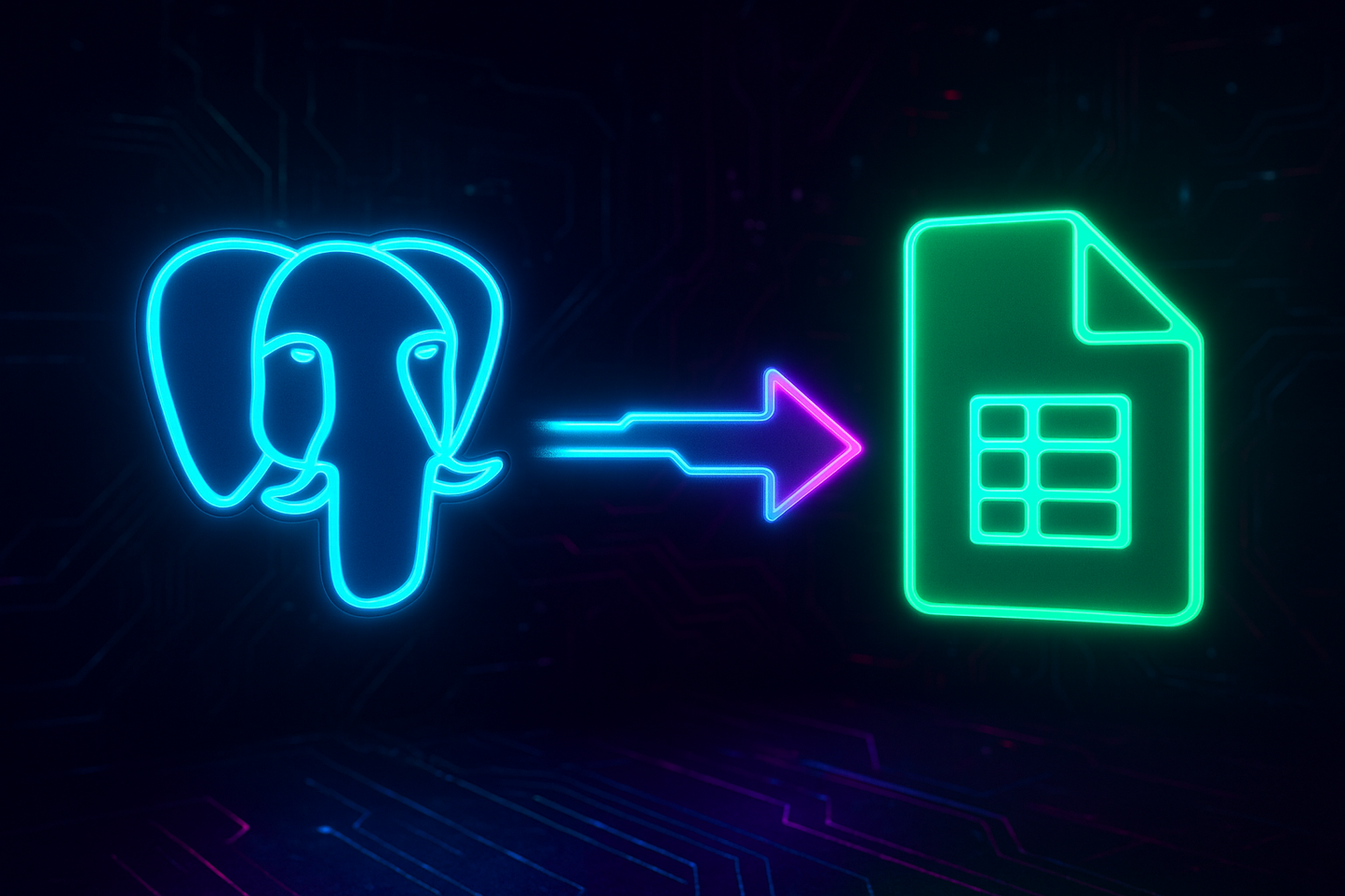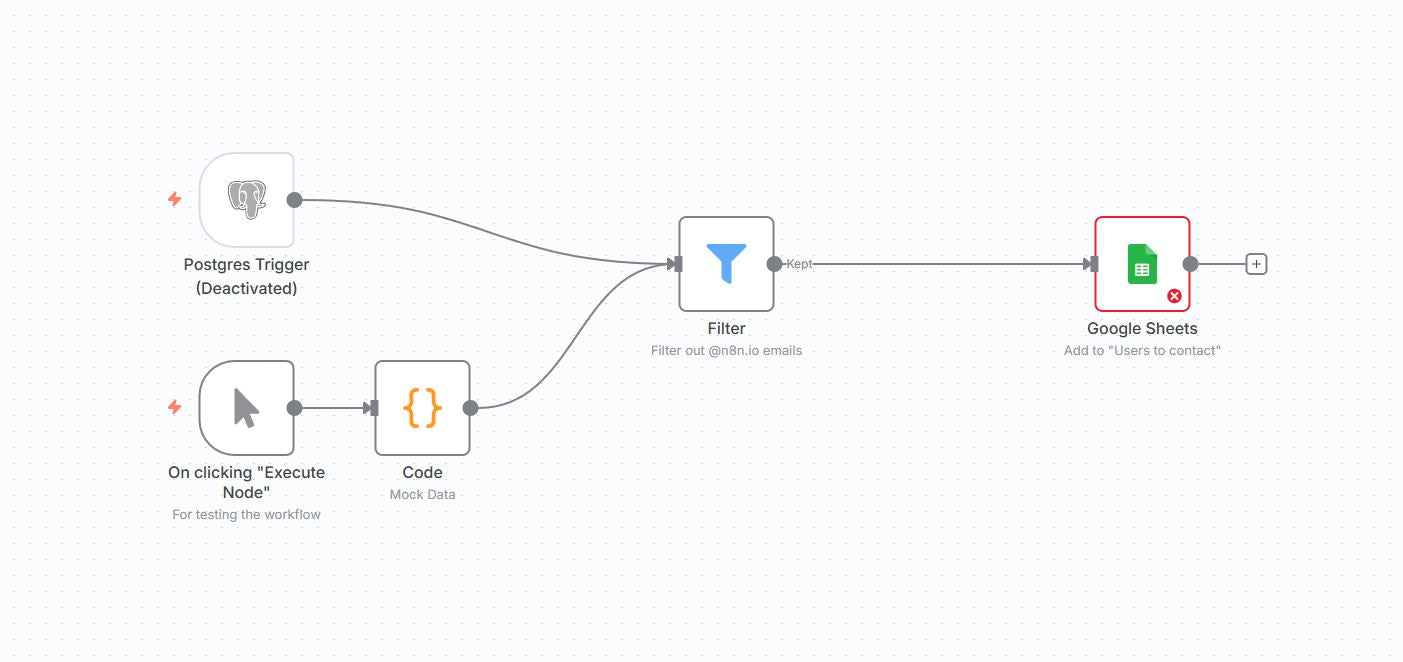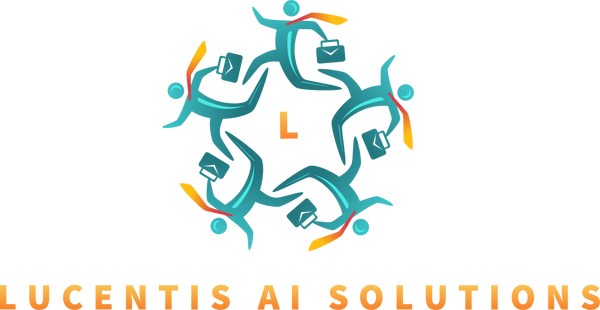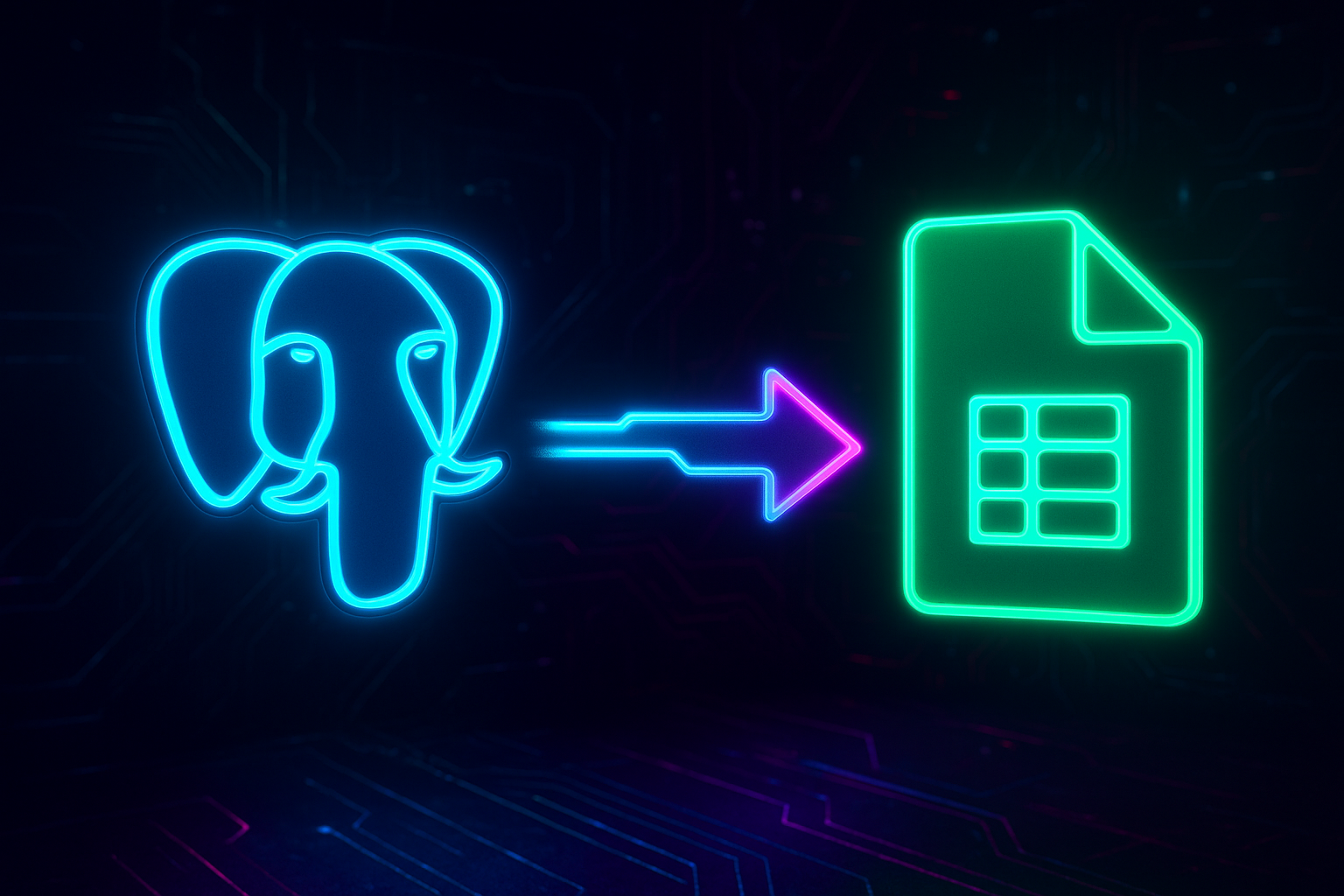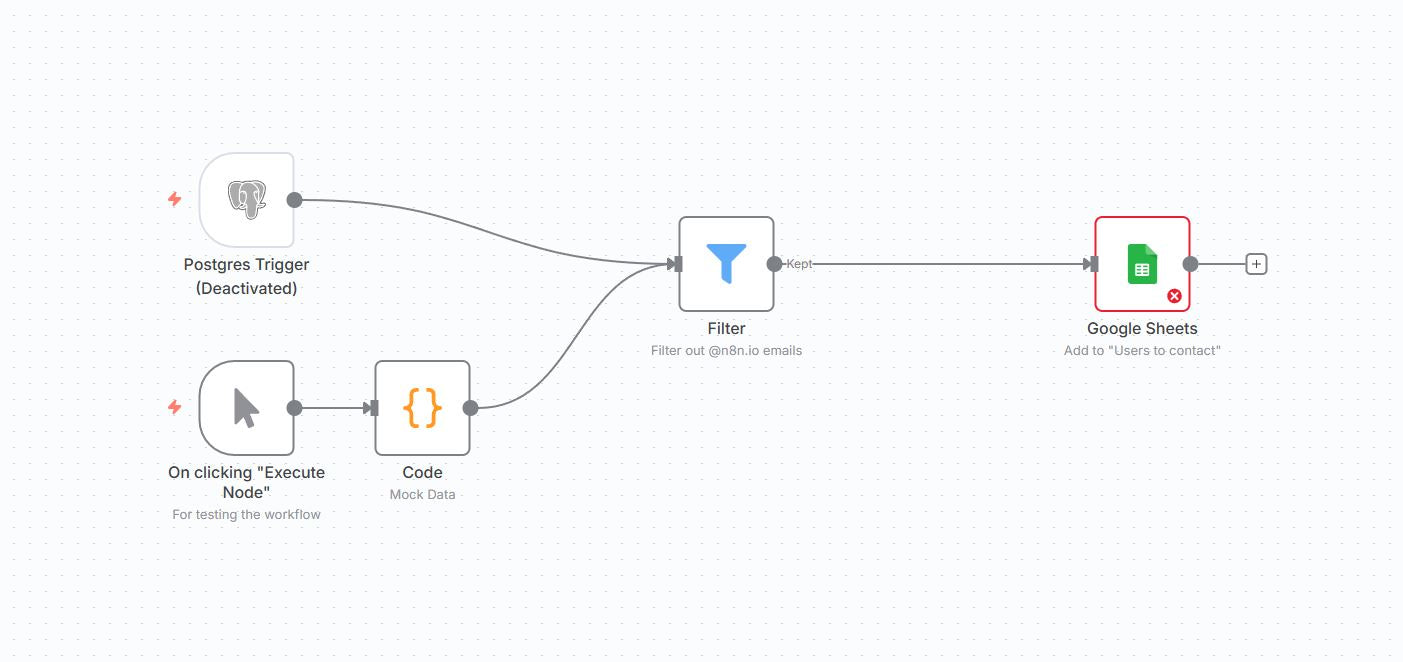Real-Time Postgres → Google Sheets Qualified Lead Sync
Real-Time Postgres → Google Sheets Qualified Lead Sync
Couldn't load pickup availability
This automation turns your product database into a live, sales-ready lead list. It listens for updates in your Postgres users table, filters out non-qualified/internal emails, and appends or updates rows in Google Sheets so SDRs and RevOps always work from a current, deduped contact sheet. The workflow ships with a manual test path and mock data for instant validation.
How it works
-
Database trigger — Watches Postgres for
UPDATEevents on theuserstable (template includes a manual testing path as well). -
Qualification filter — Excludes emails containing
@n8n.io(easily adapted to your rules). -
Sheet write with de-dupe — Uses appendOrUpdate in Google Sheets, matching on
idand mappingid,email,username, withUSER_ENTEREDformatting for human-friendly values. -
Operator-friendly testing — A Manual Trigger and Code node provide sample data for dry runs before going live.
Why it’s a game-changer
-
Zero lag from product to pipeline: As users qualify in your app, they appear in Sheets for outreach in near-real time.
-
Lower ops risk: Centralized filtering and ID-based upserts prevent duplicates and bad sends.
-
Scale without extra headcount: No more CSV exports, copy/paste, or nightly scripts; the sheet stays fresh automatically.
-
Fast customization: Swap the filter rule or destination (HubSpot, Pipedrive, Zendesk, Excel) with minimal changes.
Ideal for SaaS growth teams, SDR/BDR squads, and RevOps leaders who want database-level accuracy in a tool the whole org can use (Sheets).
Why this price?
This system replaces the manual exports and spreadsheet wrangling typically consuming 30–60 minutes/day across a small sales team. At a blended $35–$50/hr, that’s $450–$1,000/month saved in labor, plus faster speed-to-lead that can lift conversion rates. You’re buying a production-ready pipeline with event listening, qualification logic, ID-based upsert, and safe operator testing—built to scale and reduce operational error. Payback is typically 3–7 months, then ongoing efficiency dividends.
Share
